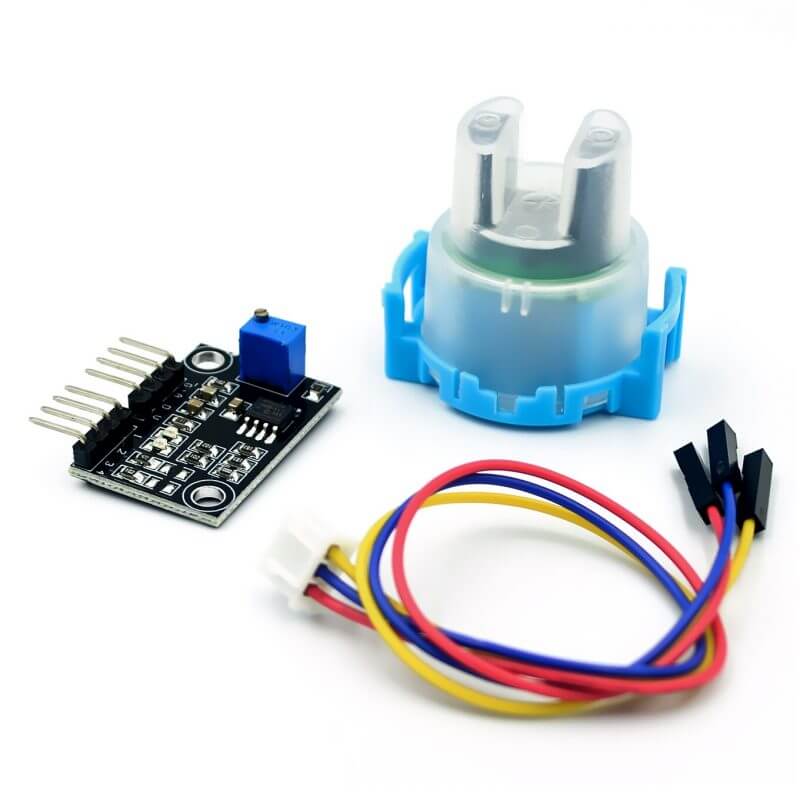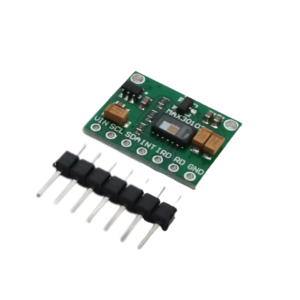Turbidity Sensor For Arduino
3 in stock
A turbidity sensor is an analytical sensor that measures turbidity. They are highly useful and effective instruments to identify the clarity and particle content in a solution, like water. Turbidity sensors are used to reduce waste, improve yields, and analyze water quality in a wide range of industries.
₨2,200.00
3 in stock
The gravity Arduino turbidity sensor detects water quality by measuring the levels of turbidity. It uses light to detect postponed particles in water by measuring the light transmittance and scattering rate, which changes with the amount of total postponed solids (TSS) in water. As the TTS increases, the liquid turbidity level increases. Turbidity arduino sensors are used to measure water quality in rivers and streams, waste water and overflow measurements, control arrangement for settle down ponds, remains transport research, and laboratory measurements. This liquid sensor provides analog and digital signal output modes. The beginning is adjustable when in digital signal mode. You can select the mode according to your MCU.
Specifications:
- Operating Voltage: 5V DC
- Operating Current: 40mA (MAX)
- Response Time : <500ms
- Insulation Resistance: 100M (Min)
- Analog output: 0-4.5V
- Digital Output: High/Low level signal (you can adjust the threshold value by adjusting the potentiometer)
- Operating Temperature: 5℃~90℃
- Storage Temperature: -10℃~90℃
- Weight: 30g
- Adapter Dimensions: 38mm*28mm*10mm/1.5inches *1.1inches*0.4inches
Interface Description:
- “D/A” Output Signal Switch
- “A”: Analog Signal Output, the output value will decrease when in liquids with a high turbidity
- “D”: Digital Signal Output, high and low levels, which can be adjusted by the threshold potentiometer
- Threshold Potentiometer: you can change the trigger condition by adjusting the threshold potentiometer in digital signal mode.
Examples:
Here are two examples:
1.Analog output mode
2. uses the Digital output mode
void setup() {
Serial.begin(9600); //Baud rate: 9600
}
void loop() {
int sensorValue = analogRead(A0);// read the input on analog pin 0:
float voltage = sensorValue * (5.0 / 1024.0); // Convert the analog reading (which goes from 0 – 1023) to a voltage (0 – 5V):
Serial.println(voltage); // print out the value you read:
delay(500);
}
int ledPin = 13; // Connect an LED on pin 13, or use the onboard one
int sensor_in = 2; // Connect turbidity sensor to Digital Pin 2
void setup(){
pinMode(ledPin, OUTPUT); // Set ledPin to output mode
pinMode(sensor_in, INPUT); //Set the turbidity sensor pin to input mode
}
void loop(){
if(digitalRead(sensor_in)==LOW){ //read sensor signal
digitalWrite(ledPin, HIGH); // if sensor is LOW, then turn on
}else{
digitalWrite(ledPin, LOW); // if sensor is HIGH, then turn off the led
}
}
This is a reference chart for the mapping from the output voltage to the NTU according to different temperature. e.g. If you leave the sensor in the pure water, that is NTU < 0.5, it should output “4.1±0.3V” when temperature is 10~50℃.
characteristic curve “Voltage —-Temperature
| Weight | 0.1 kg |
|---|---|
| Dimensions | 12 × 8 × 6 cm |





There are no reviews yet.